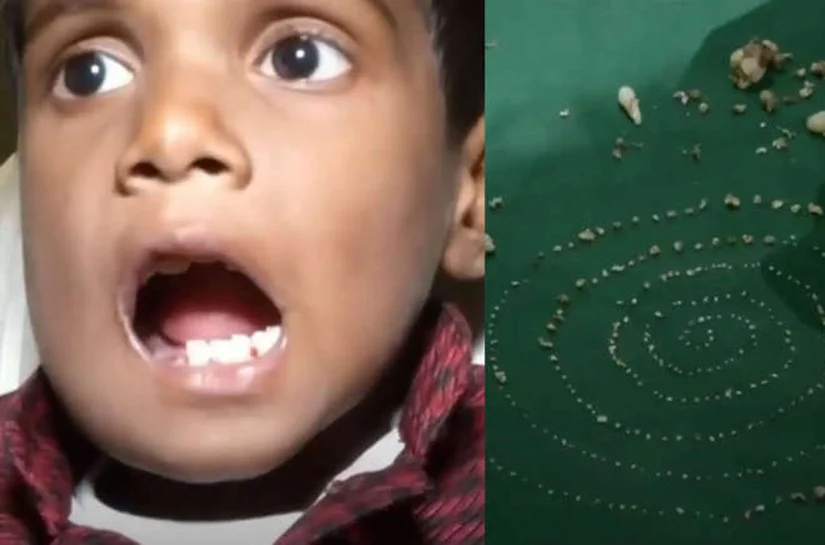
In 2019, a remarkable medical case unfolded in Chennai, India, capturing the attention of dental professionals worldwide. A seven-year-old boy underwent surgery at a university hospital, during which an astonishing 526 teeth were extracted from his jaw.
The condition had first manifested when the boy was just three years old, as his parents noticed a swelling on the right side of his face. Although initial medical consultations yielded no clear diagnosis, the lump continued to grow slowly over the years. By the time he turned seven, the absence of permanent teeth in the affected area prompted doctors to investigate more thoroughly.
Advanced imaging revealed a benign tumour known as a compound odontoma inside the boy’s lower jaw. This rare dental tumour, weighing approximately 200 grams, comprised a disorganised cluster of tooth-like structures formed from normal dental tissue. The tumour was obstructing the natural development of his permanent teeth.
Surgeons successfully removed the mass in a 90-minute operation. What they found inside stunned the team: hundreds of tiny teeth, ranging from 0.1mm to 15mm in length. Over five hours, pathology experts meticulously counted and examined each tooth. The final tally confirmed 526 individual teeth, each with fully developed crowns and roots.
Following the operation, the boy retained 21 normal permanent teeth. Remarkably, the surgery caused minimal structural damage to his jaw, and no complex reconstruction was necessary. He was discharged from hospital just three days later.
This case shattered the previous record of 232 teeth extracted from a teenager, also in India, and has since been recognised as a milestone in dental history. While the exact cause of compound odontomas remains unclear, experts suggest genetic predisposition may play a role. Environmental factors, such as exposure to radiation from mobile phone towers, are also being explored as potential contributors.
The boy has made a full recovery, with his facial appearance restored and jaw function preserved. He will continue to receive regular dental monitoring and may require prosthetic support in the future. The case stands as one of the most extraordinary ever documented in the field of dentistry.

